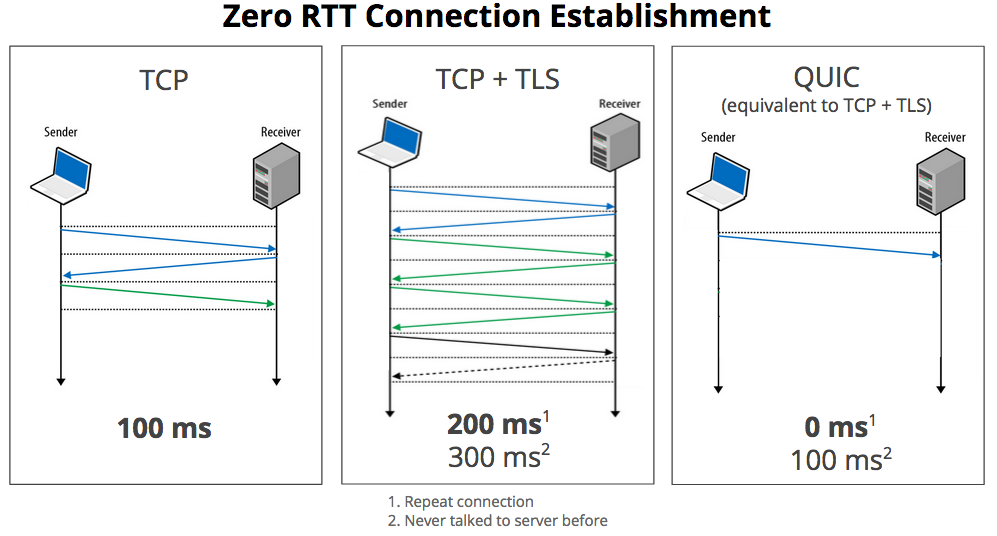Google today announced plans to formally propose its network protocol Quick UDP Internet Connections (QUIC) to the Internet Engineering Task Force (IETF). In other words, the company wants to make QUIC, which it describes as a UDP-based transport protocol for the modern Internet, an Internet standard.
Google first unveiled QUIC and added it to Chrome Canary in June 2013. Then still an experimental protocol, QUIC already included a variety of new features, but the main point hasn’t changed since: run a stream multiplexing protocol on top of UDP instead of TCP.
Before Google sends QUIC off to the IETF, the company says it still has “some housekeeping to do first, like changing the wire format and updating our reference implementation from SPDY-over-QUIC to HTTP2-over-QUIC.” In February, Google announced it is ditching its SPDY protocol for HTTP/2, the second major version of Hypertext Transfer Protocol (HTTP).
QUIC currently handles “roughly half of all requests” from Chrome to Google servers. Google is still ramping up QUIC traffic, and plans to eventually make it the default transport from Google clients (not just Chrome but all the company’s mobile apps) to Google servers.
Over the last quarter, Google has been analyzing QUIC performance at scale, and today confidently said that “results so far are positive.” The company credited QUIC’s performance improvement to “lower-latency connection establishment, improved congestion control, and better loss recovery.”
QUIC is designed so that if a client has talked to a given server before, it can start sending data without any round trips. This results in faster page loads, and Google claims that 75 percent of connections can take advantage of this zero-round-trip feature. QUIC also offers improved congestion control and loss recovery; packet sequence numbers are never reused when retransmitting a packet, eliminating ambiguity about which packets have been received and avoiding retransmission timeouts.
Google says Google Search, where connections are often pre-established, sees a 3 percent improvement in mean page load time. In fact, QUIC loads the Google Search page a second faster for the slowest 1 percent of connections. YouTube users, meanwhile, report 30 percent fewer rebuffers when watching videos.
QUIC’s numbers look decent, but we’ll have to wait and see what the IETF and Google’s competitors have to say before getting too excited.



